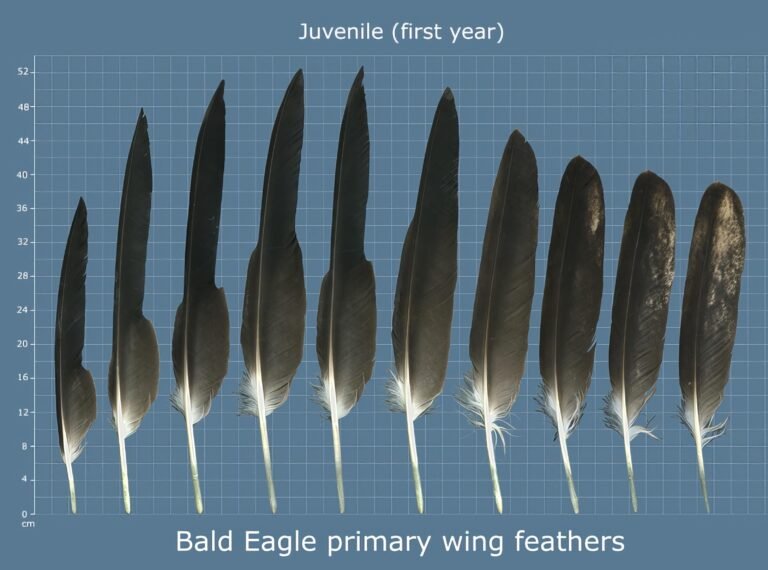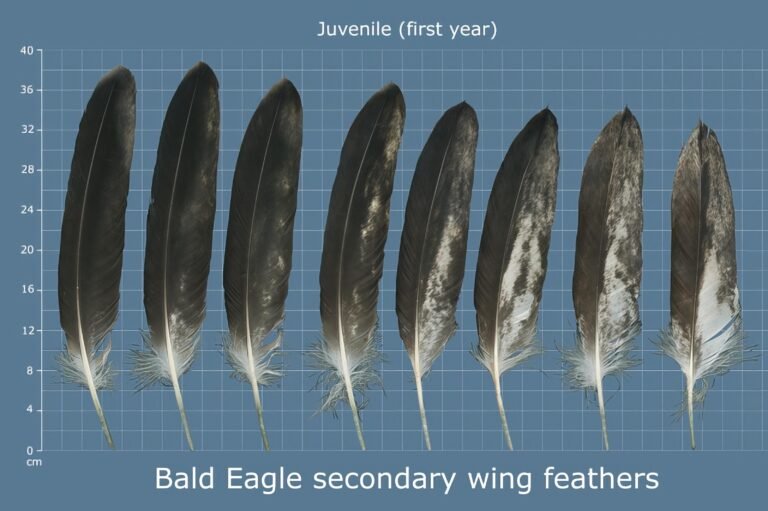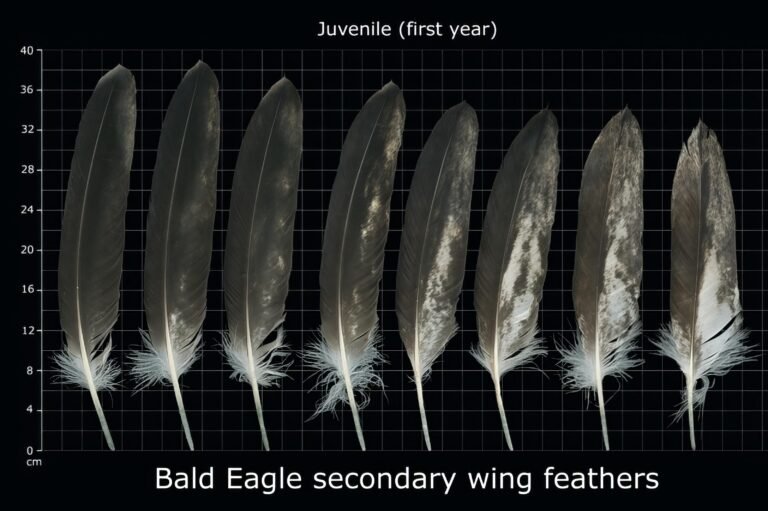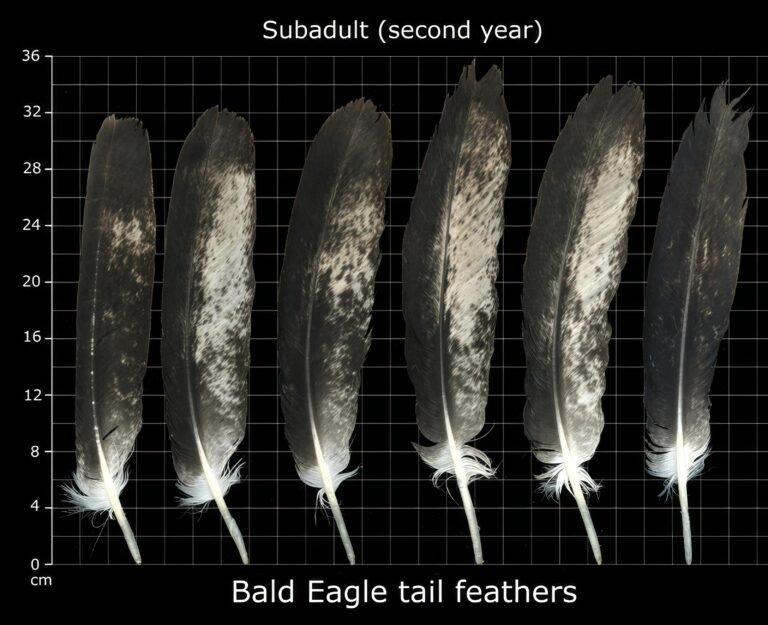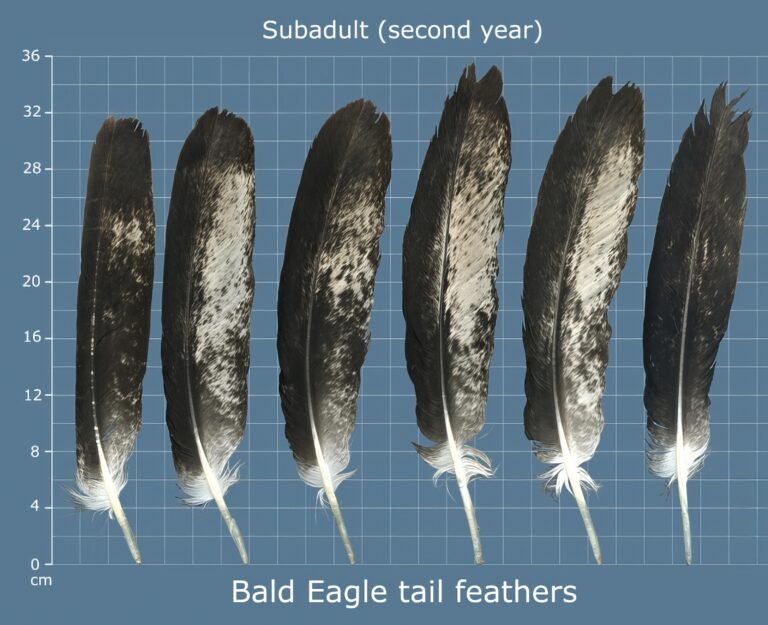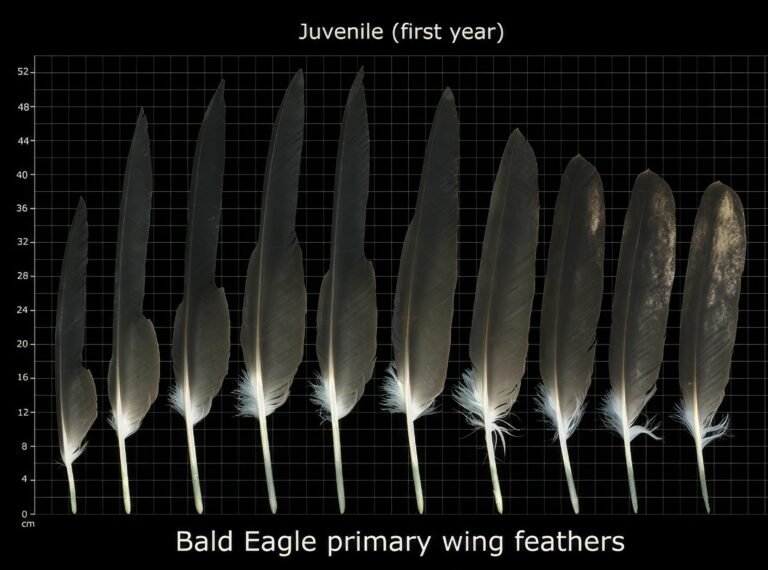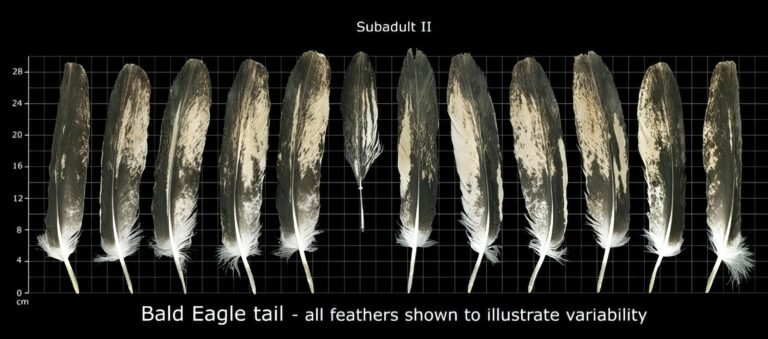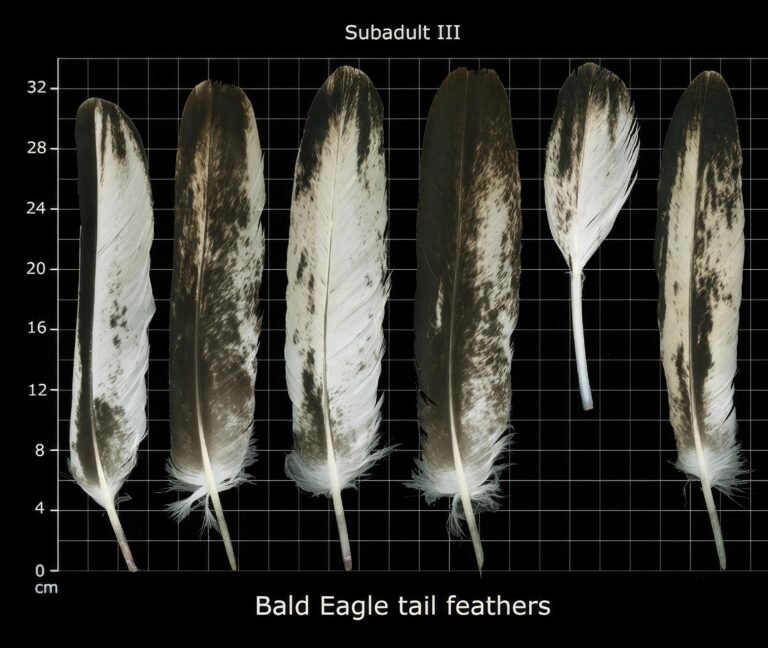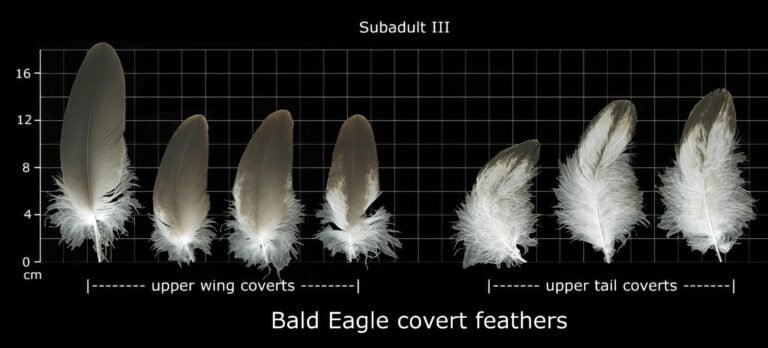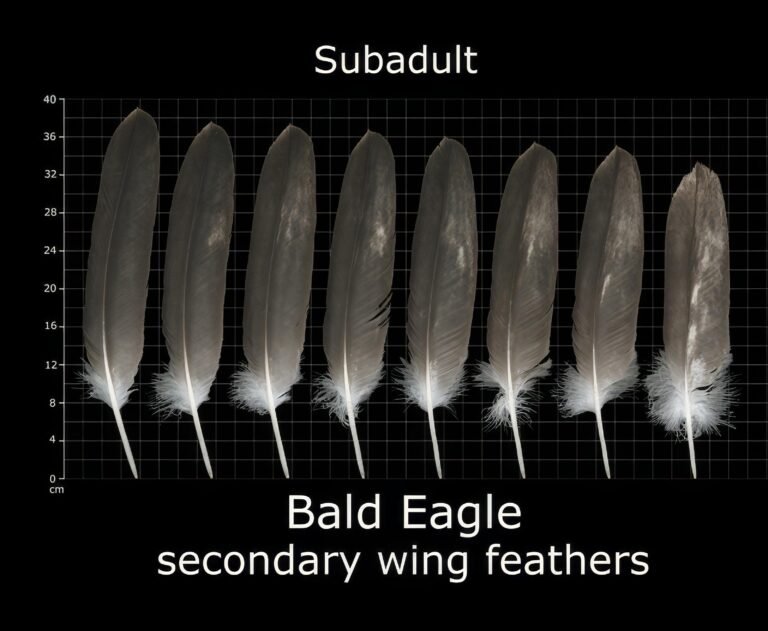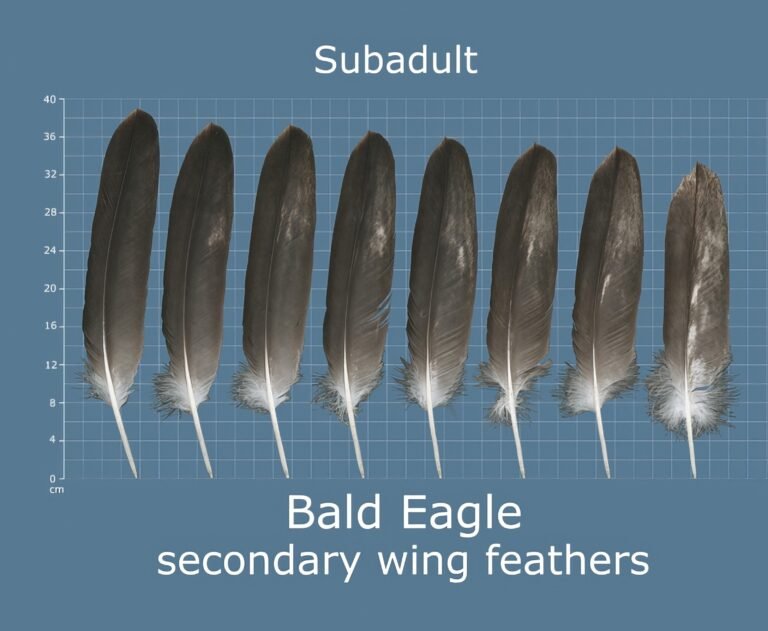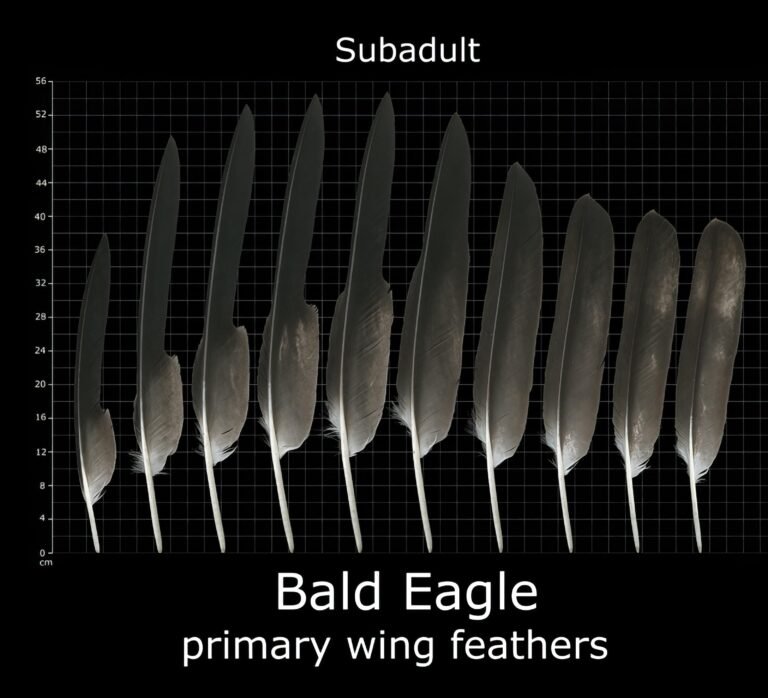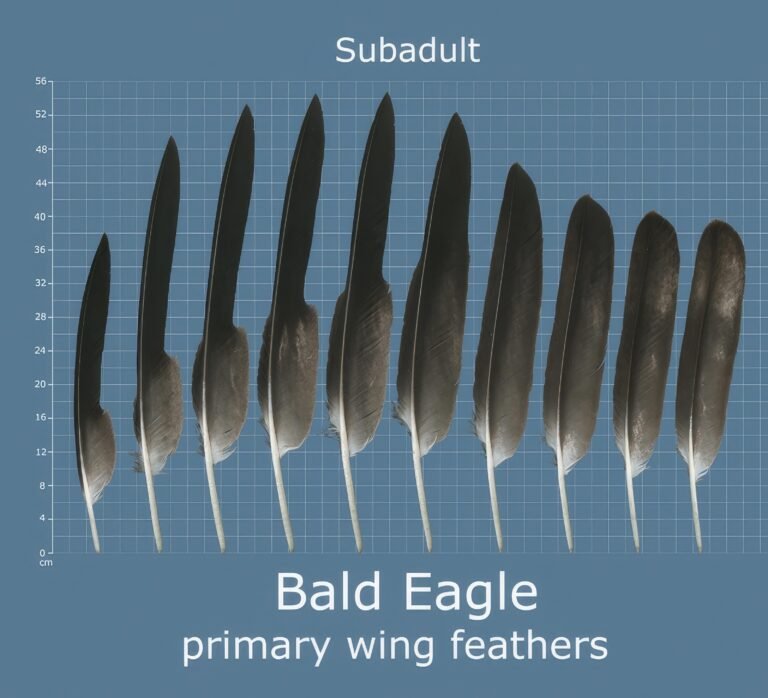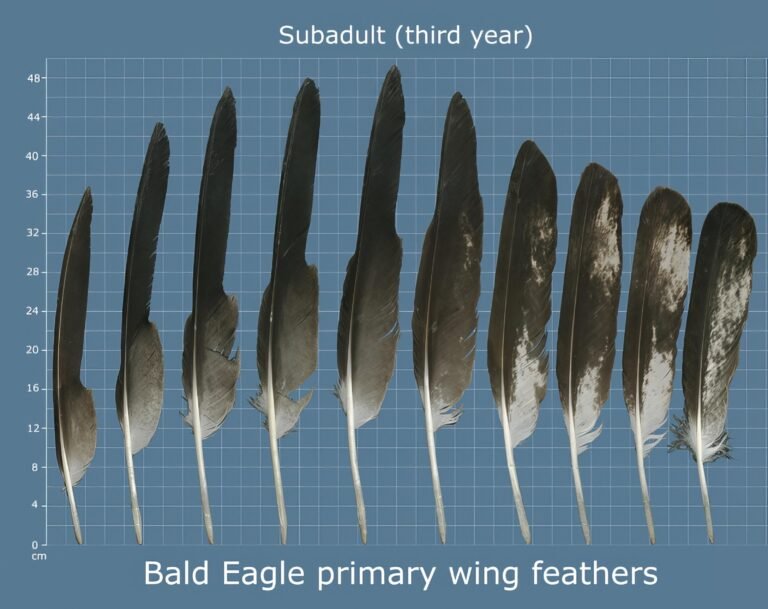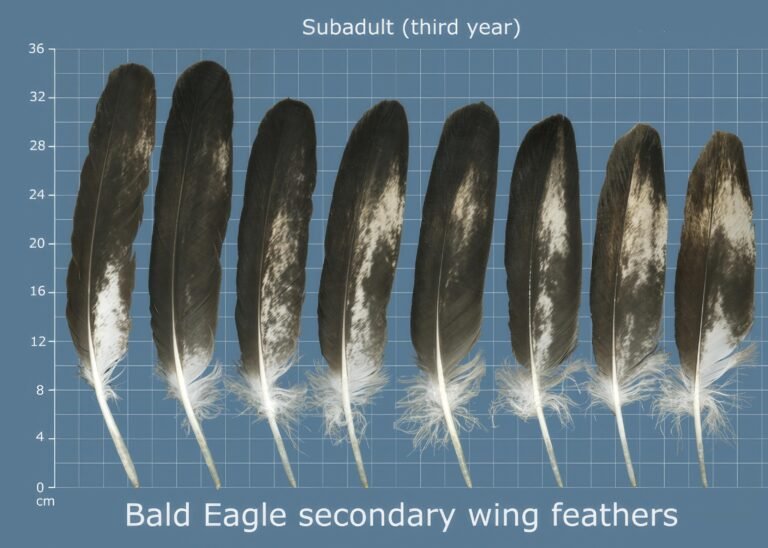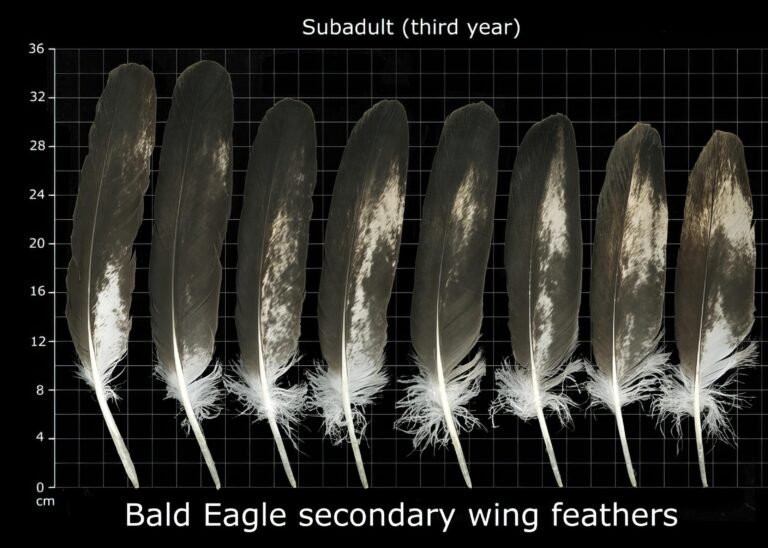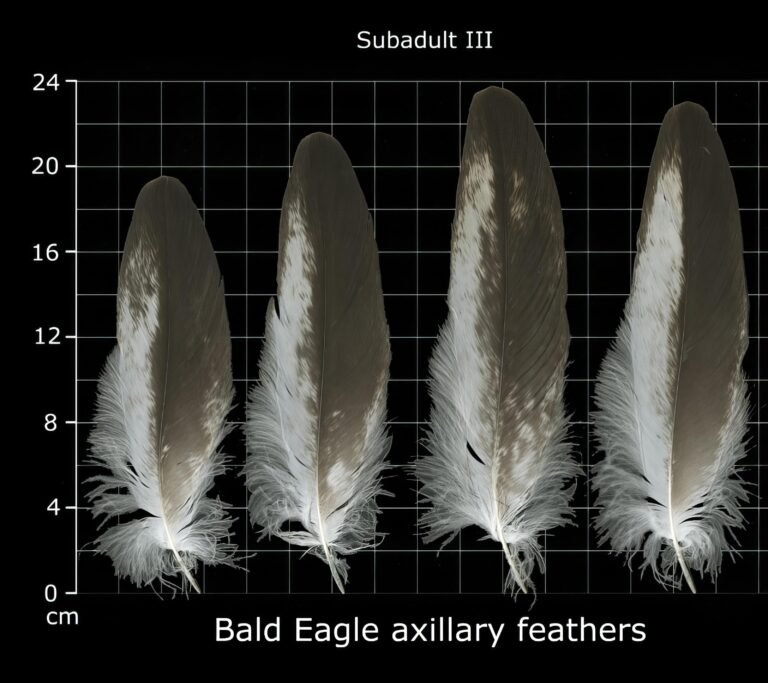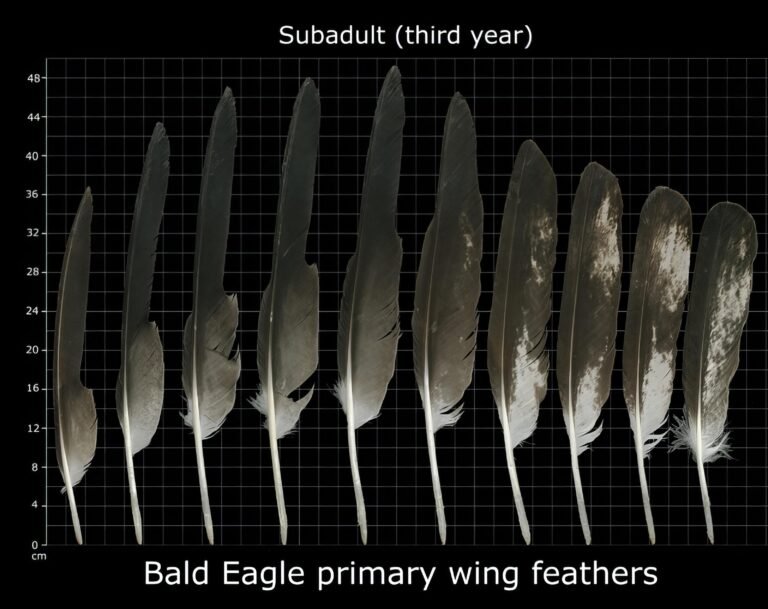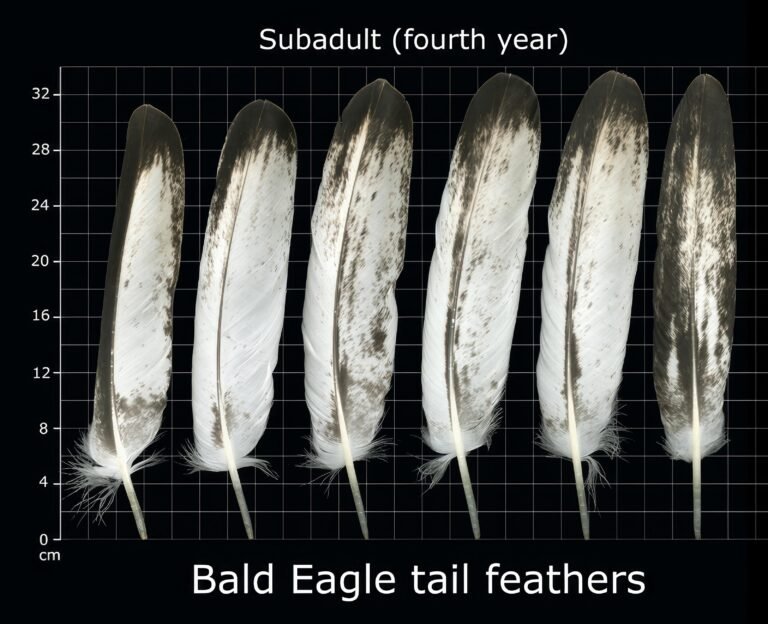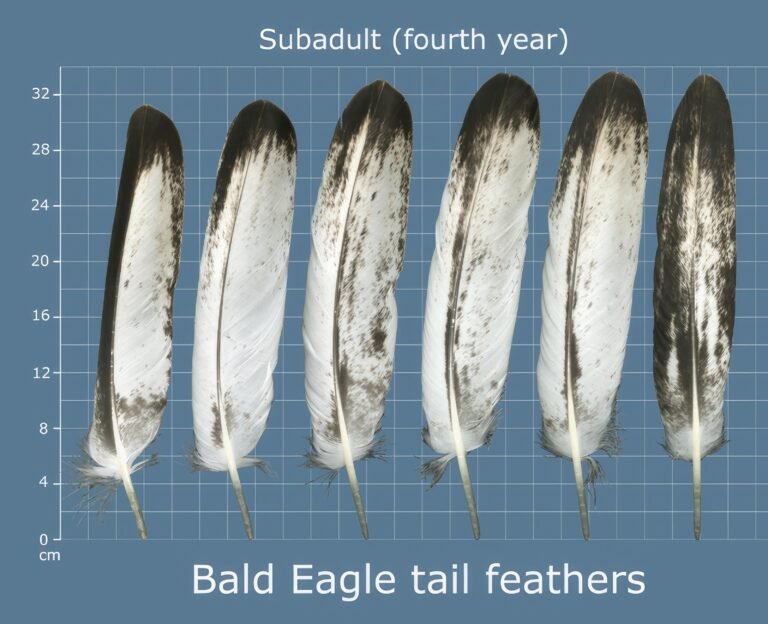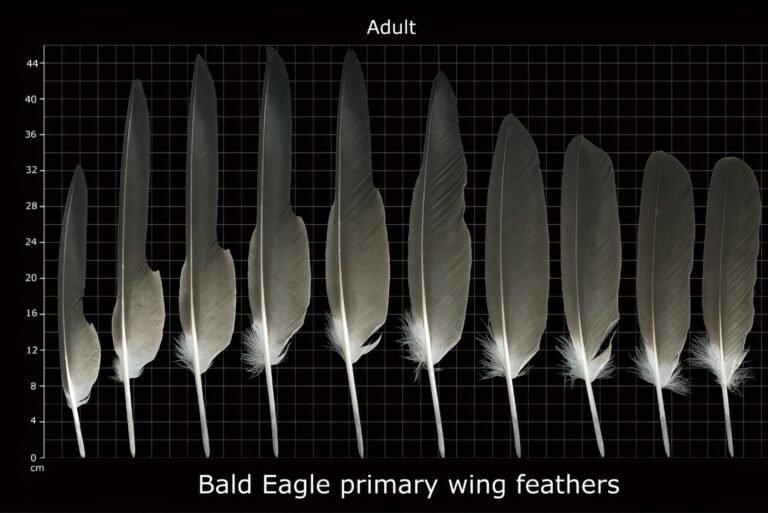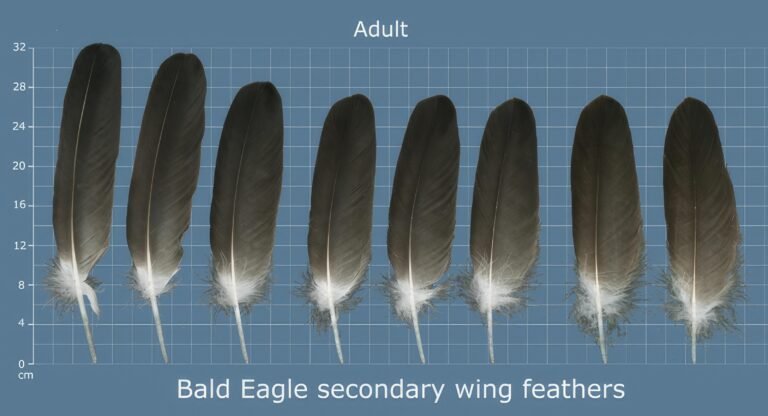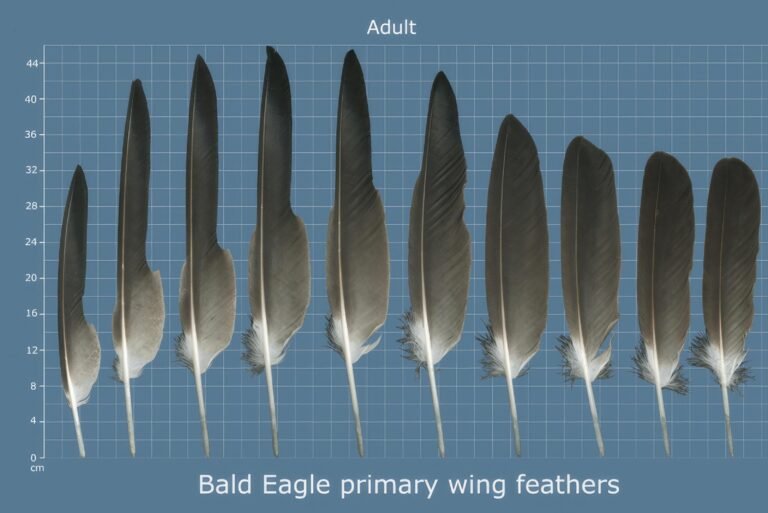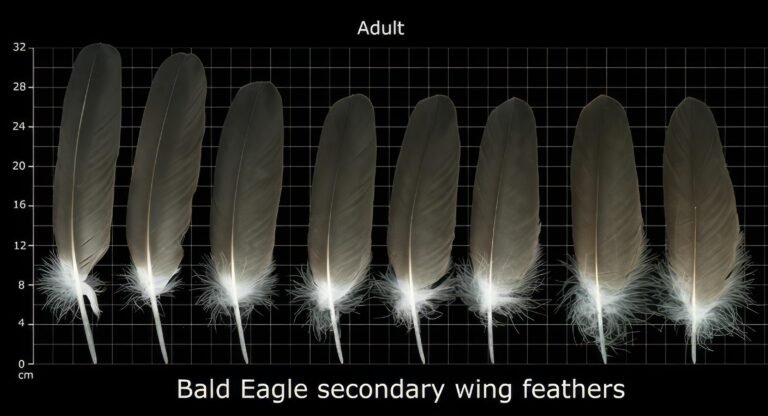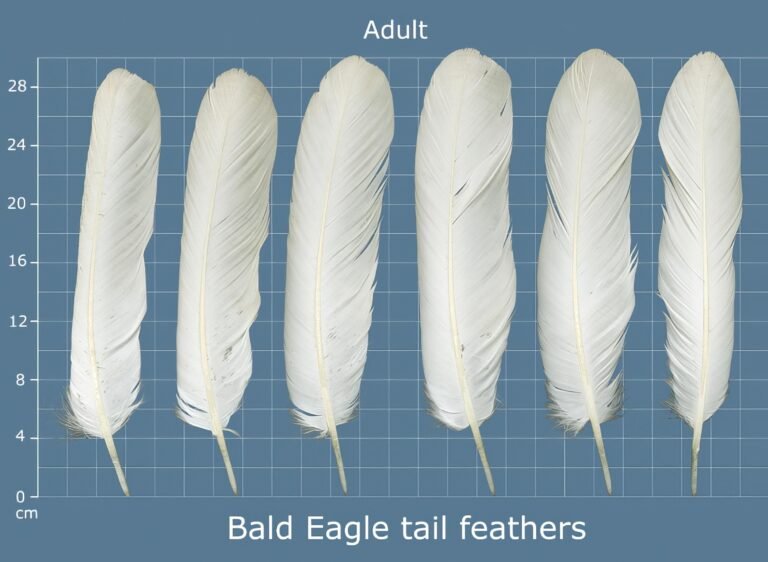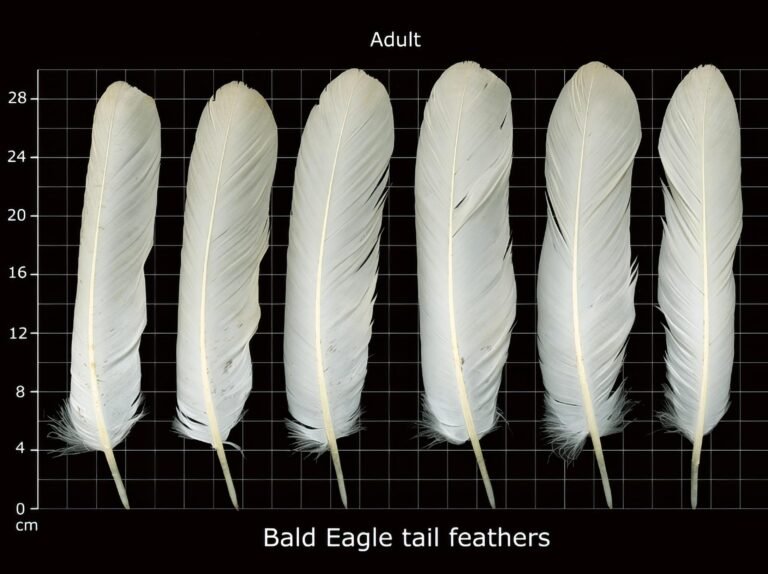
Image by EaglesExplored.com (Third Year Eagle Image by Robin Gwen Agarwal CC BY NC 2.0)
USFWS Bald Eagle Feather Atlas
Not Just Images – Insight
Welcome! See – Learn – Share. This page features curated images from the Bald Eagle Feather Atlas, a landmark resource developed by the Forensics Laboratory at the U.S. Fish & Wildlife Service (USFWS). The Atlas documents bald eagle feathers across all pre-definitive and definitive molt sequences, from juvenile to adult, offering a visual taxonomy of plumage transformation over time. Each image is authored by the USFWS and has undergone advanced image refinement to enhance clarity, contrast, and structural detail—ensuring that educators, researchers, and students can study feather morphology with precision.
🔍 What’s in a Feather? Every eagle feather includes, 1) a central shaft (rachis) for strength and alignment, 2) barbs and barbules, which interlock to create aerodynamic surface, 3) a calamus (quill) that anchors the feather to the skin, and 4) subtle variations in color, wear, and symmetry that signal age and molt stage. Together, these elements form the architecture of flight, insulation, and identity—each feather a chapter in the eagle’s life story.
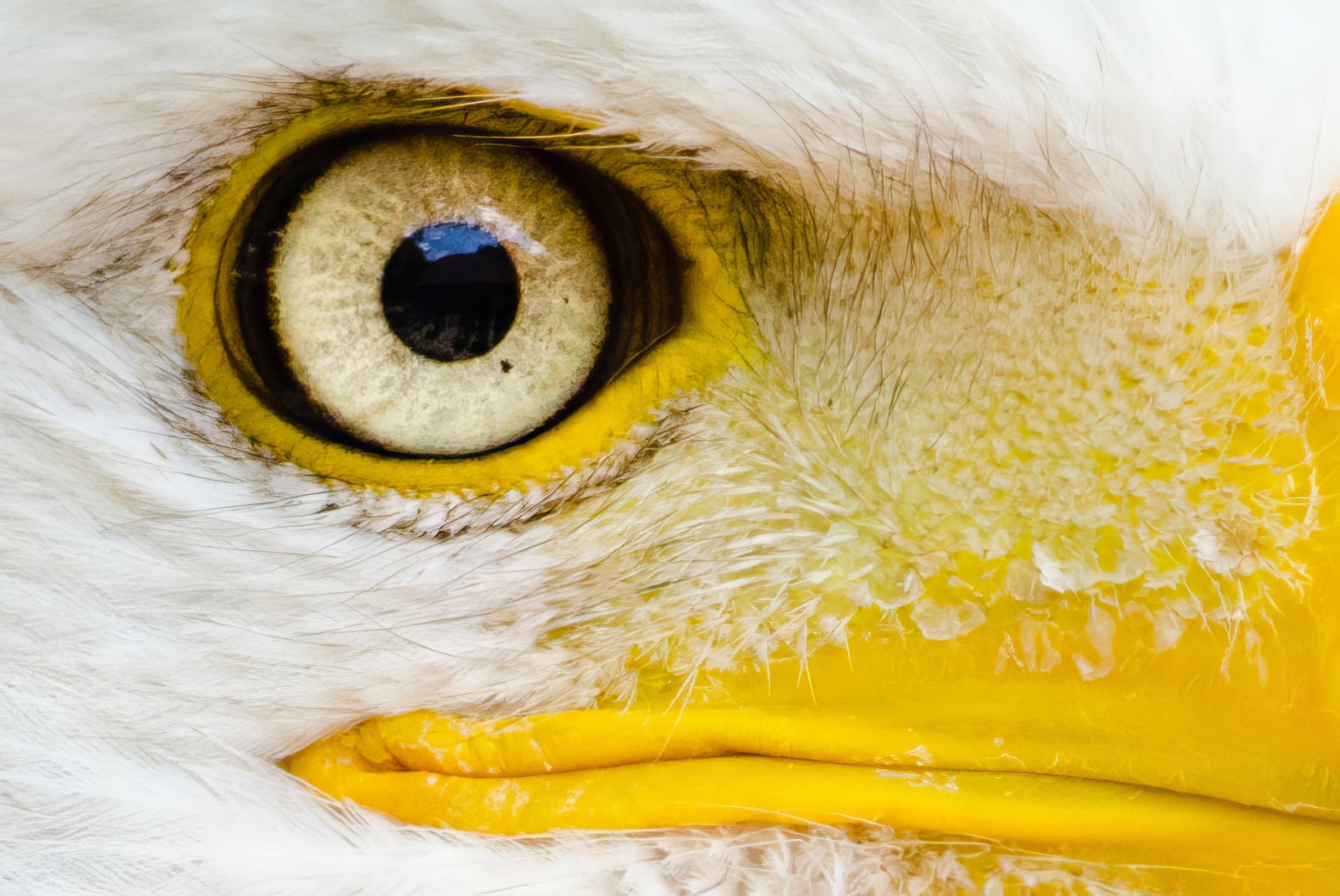
Eagles Explored offers an extensive archive of Bald Eagle imagery curated for clarity, wonder, and learning. Our galleries showcase molt sequence, anatomical details and behavioral traits across life stages. A hallmark of these archives is the incorporation of open-use licensing which means that many images on the site can be used and shared by you. From first-time eagle watchers to career biologists, the collection invites all to explore freely and share responsibly. (Image Credit Mathias Appel/ Flickr/ Public Domain. Edited by Eagles Explored)

